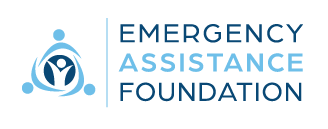
Handling an Emergency That Stretches a Relief Fund to the Limit
May 19, 2015
Establish a Relief Fund Before a Disaster Strikes – Execute Your Plan vs. Trying to Figure One Out
June 16, 2015June 2, 2015
A major risk for sponsoring organizations considering implementing a Disaster and Hardship Relief Fund as a part of their existing or new standalone foundation is failing to comply with the Internal Revenue Service’s definition of “exempt purposes.” For an organization to maintain its tax exempt 501(c)(3) status, it must further exempt purposes. Even a single nonexempt purpose being present is sufficient for the IRS to revoke tax exempt status.
The most relevant nonexempt purpose is providing a private benefit to parties administering the program. The IRS has construed company-run foundations providing disaster and hardship relief to give such a private benefit (to the company, of course), meaning that these programs will not be tax exempt. (1) This is because the IRS views the programs as a team member benefit, which is advantageous for sponsoring organizations as the programs help recruit and maintain a stable workforce. Although there is an exception for so-called “qualified disasters” – federally declared disasters – where other forms of team member assistance will be considered to create a private benefit.
A 1945 Supreme Court decision provides the precedent for the IRS’s harsh stance. The case provides that a single substantial non-exempt purpose precludes exemption regardless of other important exempt purposes. The IRS relies heavily on this case in denying tax exemptions to disaster and hardship relief funds. (2) A further example of the IRS’s position is that it stated even government funding provided to help mitigate the effects of future floods is not tax exempt, because these disasters had not yet occurred – meaning there were no exempt purposes. (3)
For these reasons, sponsoring organizations should be aware of the IRS’s unforgiving stance and should do everything possible to avoid a finding of non-exempt purposes.
- One way to do this is to only provide aid for charitable class members affected by qualified disasters.
- Another way is to have the disaster and hardship relief fund run as a public charity rather than a private foundation, which means that the sponsoring organization is less heavily involved in funding and administering the program.
Either way, sponsoring organizations should be mindful of the IRS’s inflexible position when it comes to tax exemption for disaster and hardship relief funds.
This information should not be relied on as tax or legal advice. You should seek your own counsel for such advice.
1.Internal Revenue Service, Ltr. Rul. 199917077, http://www.irs.gov/pub/irs-wd/9917077.pdf.
- Id. See also Internal Revenue Service, Ltr. Rul. 200926033, http://www.irs.gov/pub/irs-wd/0926033.pdf.
3.Internal Revenue Service, Office of the Chief Counsel Memorandum 200431012, http://www.irs.gov/pub/irs-wd/0431012.pdf.





